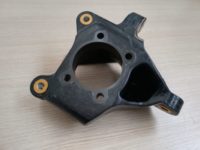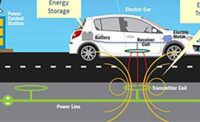DARMSTADT, Germany—Engineers at the Fraunhofer Institute for Structural Durability and System Reliability (LBF) have developed a lightweight battery pack to reduce the overall weight of electric vehicles. The new structure holding the battery cells is made of carbon-fiber composites, which reduces its weight by 40 percent compared to a traditional enclosure made of aluminum.
“This design not only reduces the moving mass of the electric vehicle, but also increases its range and dynamics thanks to additional integrated functions,” says Felix Weidmann, Ph.D., an engineer in charge of the research project at Fraunhofer LBF. “The new battery pack can be manufactured within 2 minutes and at low cost.
“This design also increases [vehicle] range and dynamics thanks to additional integrated functions,” claims Weidmann. “Because the battery pack is manufactured in a highly efficient process and has a specific structure, it can be produced very cheaply.
“Due to the large number of battery cells required, battery packs for electric vehicles are currently very heavy and [must] take into account the critical aspect of fire resistance,” explains Weidmann. “The mechanical structure around the cells, such as the cell holder and in particular the housing currently made of aluminum or steel, add up to a total weight of several hundred kilograms in addition to the electrical components.
“Depending on the vehicle design, the mechanical structure of the battery pack can make up more than 30 percent of its total mass,” Weidmann points out. "To increase the gravimetric energy density without having to change the cell technology, it makes sense to build the necessary mechanical structures for the battery pack more easily.”
Weidmann and his colleagues developed a load-bearing sandwich structure and a new production process that combines highly efficient foam injection molding with thermoplastic FRP. It enables the production of finished lightweight battery housings within 2 minutes without post-processing.
“In addition, functions such as the thermal insulation capacity of the manufactured battery housing can be integrated in the same process step, which would not be possible with classic metallic construction materials and manufacturing processes,” says Weidmann. “By choosing suitable flame retardants and structures, a high level of resistance to open flames and thermal energy input can be achieved.”
To produce the lightweight battery housing, preforms are inserted into an injection molding tool specially developed for this purpose and the foam core is injected. The housing consists of UD tapes from SABIC, which are first woven and then consolidated.
“The checkerboard pattern laminate resulting from this step is then preformed and placed on both sides in a specially developed hybrid foam injection molding tool,” explains Weidmann. “The targeted injection of an integral foam between the laminates creates the housing with fiber composite cover layers and a foam core.
“This load-bearing sandwich construction leads to the highest weight-specific mechanical properties and at the same time reduces the material consumption of the fiber composite laminates used,” claims Weidmann. “The associated reduction in material costs, in combination with the very short cycle times, leads to low component costs.
“In addition, this method is suitable for covering other areas of application and their requirements, since a wide variety of fiber composite materials and types of plastic can be combined and used,” says Weidmann. “[We have also] developed simulation-based methods in which the production quality can be predicted.”



